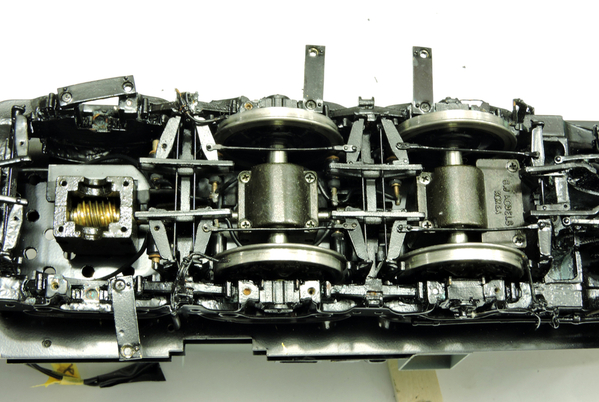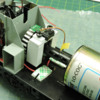PROBLEM SOLVED. SEE POST BELOW, Dated September 2, 2022
I have a Kohs GG1 that has been retrofitted with PS3 extracted from a Railking GG1. Rail King part number is 30-5118-1. The GG1 has two 9000 series Pitmann Motors
After about 3-4 minutes of running, on the rails, the GG1 stops abruptly (no gentle slow down). Within a second or two it restarts. The restart is just as abrupt, and the loco resumes at the original speed setting. It then repeats this behavior. During these halts, I can control the horn and the headlight stays lit. It is as if power from the motor board (if there is such a thing) is momentarily cut and then restored, while everything else is uninterrupted
This is a new phenomena. The PS 3 was installed in the fall of 2019
My three questions are,
1) Based on my tests below is my analysis correct that the motor driver board cutting in and out is the cause of this? Or can it be something else?
2) The current through the DCS motor driver board when the loco is moving is 1.40 A. I assume this is within the capabilities of the PS 3 board?
3) Can this be repaired?
Any help will be appreciated
*******************************************************
Here are the tests I performed
ROLLER TEST: I placed locomotive on test rollers. 2 rollers per truck (total of four), but only one roller is powered through the DCS. There is a test light across the wheel pickups, just before going into the DCS board. But there are a few inches of wire between the pickoff point and the board connector. Current is measured with a high quality Fluke multi meter in the input to the TIU (variable channel #3). Both 4 wheel trucks have been removed
0.450 A: Current measured without loco on the track
0.606 A: Current with loco on track (after about 1 min…initial current is 0.8 A)
0.634 A: Locomotive started up
1.26 - 1.32 A: Start test, locomotive at 35 SMPH
1.20 – 1.27 A: End test after 10 minutes. Ran continuously and smoothly without problem. This means the motor driver board can continuously drive 1.27 minus 0.63 = 0.64 Amps
TRACK TEST:
Added a headlight (LED)
0.450 A: Current measured without loco on the track
.610 A: Track power on
.619 A: Locomotive started up. (A bit higher than in roller test)
1.7 to 2.0 A: Locomotive running on track, running at 35 SMPH. This means the driver board must be putting out 2 minus 0.62 = 1.4 Amps
After about three minutes, the locomotive started the abrupt momentary halting routine. During these halts
1) Pick up lamp stays lit—indicating the board is getting power
2) Current drops to .620 A, indicating motors are not getting power
3) Headlight stays lit and I can activate the horn, indicating board is still “active” (The fact that it abruptly resumes its original speed suggests the same thing)
When motors start turning again, the GG1 rapidly returns to the pre-halt SMPH
Running at 25 SMPH, decreases current to 1.5 A. But I get same halt/restart behavior after 5 minutes





















